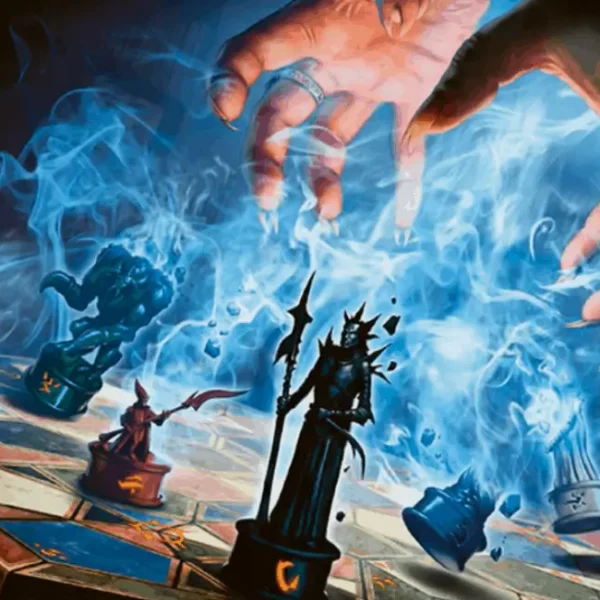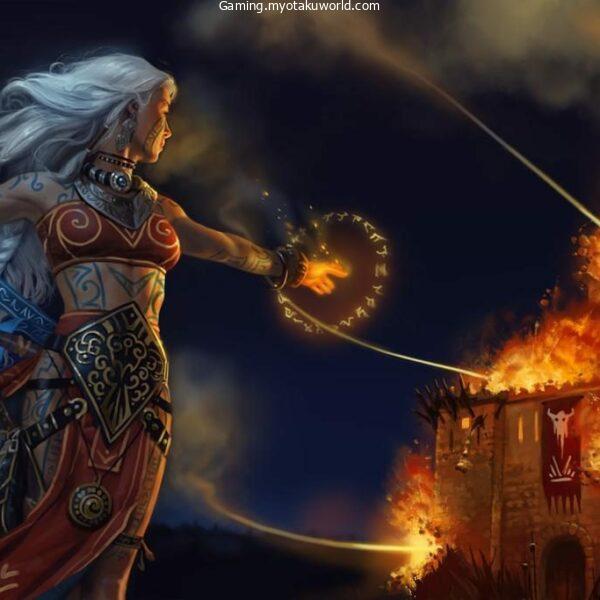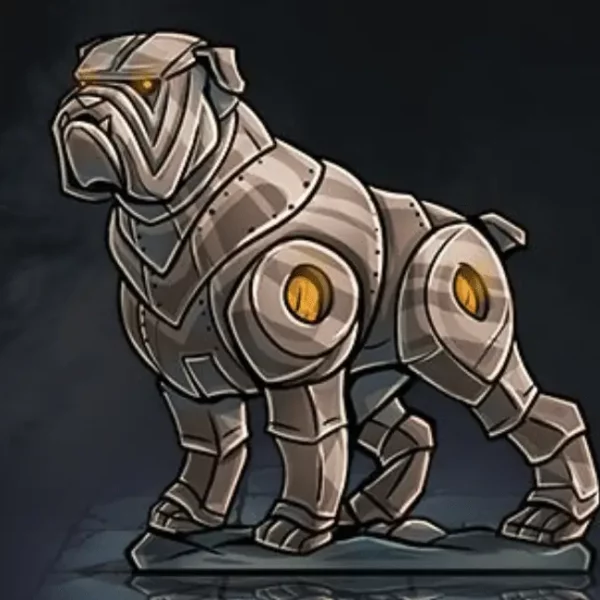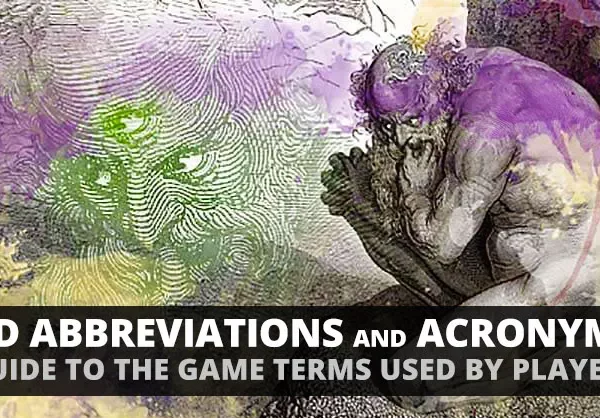Shatter spell is a popular one. Shatter ability is a tasty damage spell with numerous applications.
Inflicting damage on objects, as well as enemies, gives space for imagination.
This is among the magic spells which is dependent on the kind of game you are playing to determine how effective it will be.
Shatter’s rules are within the Players Handbook on page 275.
Shatter 5e

- Evocation 2nd Level
- Casting Time: 1 action
- Distance: 60 feet
- Components: S and M (Achip made of mica).
- Duration: instantaneous
A sudden, loud ringing sound that is intensely painful comes from a place that you choose within your range.
Every creature within a 10-foot radius globe that is located around that point has to make a Constitution save.
A creature suffers 3d8 thunder damage when it makes the failed save and half that damage if it succeeds.
The creature that is made of non-organic substances like crystal, stone, or even metal suffers a disadvantage in this saving throw.
An object that isn’t being worn or carried is liable for damage when it’s within the area of the spells.
At higher levels: If the spell is cast with an enchantment slot that is 3rd level or more the damage is increased by 1d8 for every higher than 2nd.
The rules that govern the Shatter spell clearly define it as an attack spell. It also reveals the weaknesses of the spell by safeguarding items that are carried or worn.
This limits the impact that the spell might be able to have.
The rules state that the spell could be destructive to other objects, so it does provide the ability to be used outside of combat.
It also has the benefit of the use of it against creatures made of inorganic material which could be an advantage depending on the circumstances.
Shatter, as explained in the spell, will require you to select the point of origin. It doesn’t state that you have to look at the area of origin.
These permits shatter to be cast into rooms or into regions that are a magical dark.
Does Shatter Work?
Shatter is an attack spell that is the more powerful, more powerful sister spell to Toll the Dead.
It can deal damage of 3d8 as a base-level cast and isn’t a lot of damage as a second-level attack spell.
The real benefits of Shatter when it comes to combat goes, are in the additional specifics.
Non-magical objects that aren’t carried or worn also suffer the brunt of the damage when they are located in the spelling zone.
At first glance, this appears to be common use for hard-to-reach doors and strong locks. If you think about the fact that weapons that were taken away from their owners fall to the feet of the previous owner and take to a new level.
The main benefit of having Shatter prepared is that it can deal with creatures or constructs made out of inorganic materials, such as elementals.
A majority of creatures that fall in this category are immune to piercing, bludgeoning, and slashing.
Being able to smash them with a full 3d8 while casting base due to the disadvantage that is imposed is significant.
The Dungeon Masters Guide provides hit points for the most common objects at 247. This can be extremely useful to a DM who has a player who is using Shatter.
How loud is Shatter?

The Shatter rules do not specify a specific area where the spell must be heard. There have been some concerns regarding the use of spells.
The truth is that it comes down to the DM’s discretion and you should talk to them if considering taking this spell.
A comparison of Shatter, as well as Thunderclap, is provided below.
Within these rules, the sound of shattering can affect animals and other objects that are within the 10-foot radius of the sphere.
A popular understanding of this is that if you go outside the circle it is unheard of or extremely low. This requires acceptance that magic can be used to do fascinating things.
However, this doesn’t think about the actual object breaking. If a door made of iron is the object of shattering and the door is hit, it will break.
The fragments of the door could theoretically smash into the ground, causing an enormous amount of noise.
When you look at the description of Thunderclap it is simple to discern the audible distance the spell will travel when it is cast.
You produce a blast of loud sound that can be heard from 100 meters away.
The line clearly states that the sound can be heard for up to 100 feet. The same description is also given for Thunderwave.
This could indicate it is likely that the Shatter spell isn’t significant as a source of sound that is not within the 10-foot radius of the circle. As always, it comes down to DM discretion.
What does Shatter do?
Shatter can cause harm to enemies, specifically ones that tend to be resistant to piercing, bludgeoning, and slashing damage.
Additionally, it damages nonmagical objects that aren’t being carried or worn. It gives the player one of the more powerful and elusive spells available in the game.
For instance, fighting takes place within a typical house or similar structures. It is very likely that one properly placed Shatter spell could knock down the entire structure, considering that it does damage to items that aren’t being carried or worn, including the beams supporting it.
Another scenario that could be considered is starting a rock slide on the slope of a mountain to block access to the path.
A spell that causes a Shatter on a weak spot in a rock outcrop could send a large piece of rock down.
In the end, even though the use of only Shatter may not completely collapse the entire dungeon, making the floor of shattered stone could be a possibility.
Converting the hard stone into loose gravel could make rough terrain in the place. Because of the spell’s radius, this could result in some problems.
Shatter is a versatile spell that can be utilized in non-combat settings. As a DM, be aware that a person who uses the spell might not be aware of the implications.
It is a spell that could turn a game its head and allow players to be as creative as it is possible. Everyone will be able to enjoy playing more.
Who Can I Target With Shatter 5E?
You can use Shatter on any target within 60 feet, but you need a clear path to get there (the point of origin of the spell). So, you can use Shatter in a place you can’t see, but you still have to be able to see the center of the sphere it makes.
Shatter affects all non-magical creatures and things that aren’t being carried within a 10-foot radius of the point you choose.
Shatter 5E Compared To Thunderwave
Thunderwave is a more powerful spell, but it is harder to control and use. Both have a weakness in that they use Constitution as a saving throw, but Thunderwave does less damage.
Thunderwave comes from all around you, so there are fewer places you can put it. Thunderwave, on the other hand, does more damage and pushes creatures away.
The big difference is that Thunderwave has a huge range of sounds. Most DMs agree that Shatter is a much more stealthy option that won’t bring every monster in the dungeon right to you.
Final Words
Shatter is one of the least praised and feared spells available because its straight damage output makes it ineffective compared to other spells at the second level.
The flavor and the problem-solving aspect of the spell are the most appealing aspects. The spell opens up a vast array of possibilities for players’ creativity.









